He’s a part of triathlon history and has contributed back to the sport he loves in many ways. Frank Day is the inventor of PowerCranks, one of the most effective ways to improve your cycling efficiency, with dividends paid off in the form of faster cycling and running times.
We recently had the chance to chat with Dr. Day about triathlon in the early days, some of his favorite tri memories, as well as his thriving business and what’s in store for the future…
Hi Frank, you have a very deep history with triathlon. For those of us who don’t know, can you give us a rundown of how you got involved with the sport many years ago?
“Back in 1978 I was primarily an endurance runner (jogger is more like it, my best ever marathon was a 3:15). I was taught how to run distance in my last year of medical school by mentors who happened to run the Honolulu Marthon Clinic. They did this so we could understand how they taught sedentary people how to exercise. Anyhow, I came to love to run.
“A couple of years later I heard about this event coming up in about 2 weeks on the radio as I was commuting home from work one day on my bike (I was living too far from work to commute by run) and I got to thinking and thought I had a background that might let me do it.
“I had been a slow but safe swimmer in high school, was commuting to work by bike (even though I had never ridden a bike more than 10 miles, the one-way distance), and had completed some ultramarathons, most notably a 50 miler and the Run to the Sun, a 37 mile run up Mt. Haleakala, from sea level to 10,000ft, on Maui.
“I called the number they gave on the radio and it was John Collins. When we met he explained to me that I was in as good a shape as anyone doing the event and all anyone was trying to do was to see if it could be done. I went over to the O-Club pool and swam a mile, didn’t drown, and decided I would try. Since I only had about a week’s notice there was no special training or anything, all I had to do was find some people to act as my support crew.”
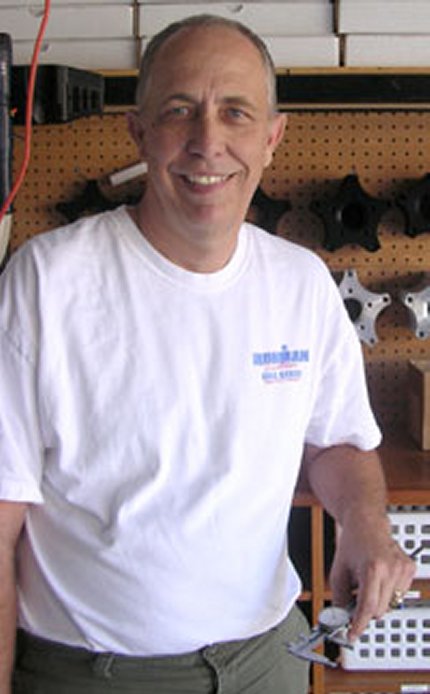
Looking back on the early days of triathlon, what are your favorite things about the sport back then? Did you ever think the sport would end up the way it is today?
“Back in the early days, a marathon was the “toughest” thing the average athlete aspired to do. My favorite thing about triathlon back then is it was an individual challenge (it still is but not quite the same) and it set one apart from the pack. Everyone was doing it on their own, no help from coaches, or friends or anyone.
“Those who did it in the early years were not afraid to try something different, to push the envelope. Now, it is obviously something that almost everyone can do and is the new “marathon” for the average person. But, back then no one knew anyone could do it, let alone everyone, and we were willing to try. I think that is what set us apart from the average and what I am most proud about myself, my ability to think outside the box. It is probably what led me to PowerCranks.
“No way would anyone have thought it would turn out like this. I think the most anyone could have rationally predicted for this event would be it might be as popular as ultra-marathoning. Ultramarathon events would have 50-100 people with, maybe, a few thousand practitioners world-wide. Shows what we knew.
“There were 60 people at the starting line the second year (only 15 got in the water because the conditions were so awful) and 250 the third, with almost no publicity. Something about this event caught people’s imagination and became a personal challenge to them, as there was no glory in the early years. “
In the 70s and 80s, how did you train and what was known about proper nutrition and hydration?
“Most of us who did ’78 were “just” runners although a few also did some swimming with the Waikiki Canoe Club. I don’t think anyone in that first event, with the possible exception of me and John Collins, had done any bike riding, as several had to borrow or purchase bikes the week before the race, and the longest I had ever ridden was 10 miles.
“What we knew about proper hydration and nutrition applied mostly to marathoning, not to events lasting 12-24 hours. I had heard that people in the TDF used oranges and bananas for fuel during those races. That, plus water, is what I used, as I remember. “
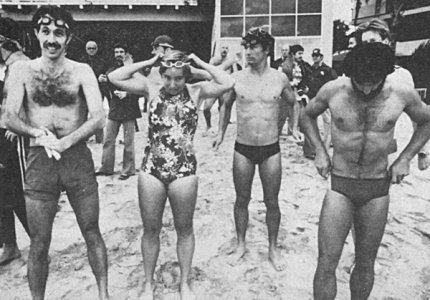
A graduate of the U.S. Naval Academy, you have a background in engineering (having spent 5 years as a nuclear engineer/submariner) and then you decided to become a medical doctor. How did this experience, combined with your own athletic experience, drive you to invent PowerCranks?
“Nothing drove me to invent the PowerCranks. I stumbled across the idea but had the back-ground to recognize the potential. Back in the early 80’s there was an article in Scientific American about the bike speed record and its progression. It went into the elements of what it took to set the record. It indicated that the power that the human could generate was limited so the real key was aerodynamics. After my father died I spent about 3 months with my mother trying to get her up to speed to take care of herself (my dad had done everything).
“During this time I started to think about this human powered vehicle problem and thought I could design a vehicle that was superior to anything I saw in that article. My idea was to reduce the frontal area to the absolute minimum and to get the most aerodynamic shape I knew, a teardrop, in the same vehicle. This involved putting the shoulders forward and the rider prone with the legs straddling the rear wheel. To carry this off would involve coming up with an independent right and left drive.
“Before spending a lot of money building something that wasn’t going to work I decided to try to figure out what it would take to make independent drive by modifying a regular bicycle. As I was playing with this, the lightbulb went on that this could be a pretty good training device to teach pedaling technique. I built something a little stronger than what I had and started training on it.
“Within 3 months I was riding 3 mph faster than I ever had before. I knew I was on to something but I wasn’t going to do much with it unless it was patentable as there was no way I could compete with the big boys, once they figured out what a powerful idea it was unless I could get a patent.
“Turns out it was patentable. There were many ideas out there that were similar and I think what set me apart was that they were “inventors” trying to improve the bicycle (to using a stepping motion) and I was an athlete who saw it as a way of improving the athlete, not the bicycle.
“Anyhow, with that, the idea of PowerCranks was born and the attempts to design my world speed record bike were abandoned. All that was necessary was to fine-tune the concept to something that would stand up to the abuse cyclists provide their cranks day after day. That has been an ongoing process. What I have now is pretty good. “
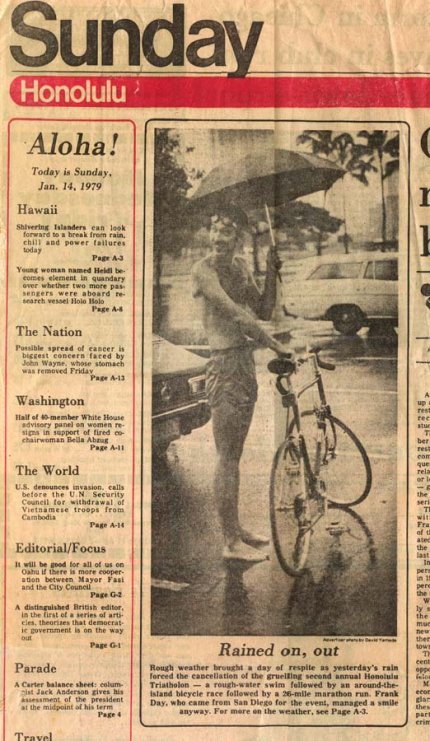
In a nutshell, can you describe how PowerCranks work?
“The cranks are simply independent. Each crank has a one-way clutch such that it will drive the bicycle but each can’t help the other. This forces the rider to lift the crank on the backstroke if they hope to pedal the bicycle. It trains the other half of the muscles of the legs and trains the two-legged coordination to “pedal in circles” without thinking about it. “
People are quick to associate PowerCranks with improved cycling power and efficiency for obvious reasons. However, these are also beneficial for running. How did you first learn of this benefit?
“Well, some of our first customers came back and mentioned it but it didn’t mean much to me as none of them were particularly good runners and I didn’t understand much about running form, despite my background as a runner.
“I was just a “run more to get faster” kind of guy. Then one day the phone rang and it was Alberto Salazar, a marathon world record holder, who started talking to me about running form and what these cranks could do for that and he wanted a set for his coaching practice.
“Then, shortly thereafter, another elite runner, Aaron Thigpen, who happened to be local, found us on the web and he was looking for a non-impact way to continue his run training while recovering from a knee injury. He used the same words Alberto Salazar had been using to describe running form and the potential of the cranks.
“Four months later, when he took more than 0.2 seconds off his 100 m time, setting an American age record at 10.34s, I became a firm believer in what these do for the runner. I now understand why I was never very fast. I don’t own any fast twitch fibers and my form was awful. “
Can you give some stats on various athletes’ cycling and running improvements after using PowerCranks?
“The improvement people see is all over the place. It seems to depend upon how good they are now, what their particular weaknesses are, and how they use the product. In cycling we see anywhere from small improvements to well over 5 mph improvements in one season. The vast majority seem to average about a 2-3 mph improvement. In running, the range is just as large with most people seeing about a 1 min per mile improvement in about 3 months.
“When I first developed these, I knew they would be useful but I didn’t know what to tell people to expect. So, I found some local cyclists to participate in some beta testing. I gave them some cranks and tested them monthly. Of those who completed the process, getting to where they adapted fully, we saw about a 40% increase in cycling power in less than 9 months.
“It turns out that this calculates to about the 2-3 mph improvements that most people are reporting so I think the 40% number we use has shown itself over time to be a good number, on average. Even though I take a lot of flak for using such an “impossible” number, the only people giving me flak about the number seem to be those who have never trained on or used the product. We give a 3 month money-back guarantee if you don’t trust that number. About 2 in 1,000 send them back.
“So, whatever the improvement that our customers see, about 99.8% of them seem to think the amount of improvement they see make the cranks worth the money they spent. “
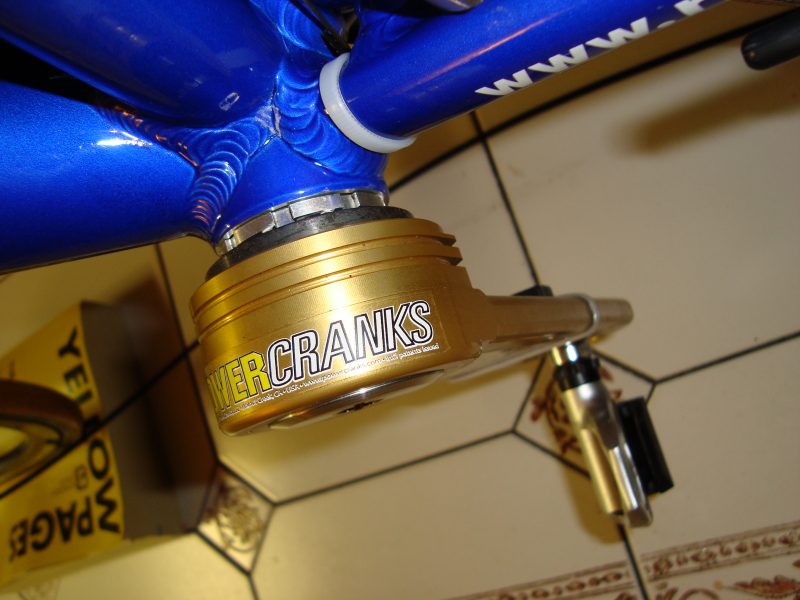
What’s in store for the future with PC’s? Any new developments on the horizon? Any big-name triathletes or cyclists on the roster?
“We have a racing crank soon to come to market. It is in the final stages of development. The concept is sound but trying to get the weight down and the reliability up before we offer them for sale. A few wrinkles to work out still. It will work more like regular cranks but give feedback to the user if one is not pedaling in circles.
“It is expected it will be a better tool to fine-tune the already well trained PowerCranker than it will be to train the uninitiated into the PowerCranks style. If you are not a PowerCranker now, don’t wait for it. Regular PowerCranks will still be the best thing for the uninitiated. These will be more for fine-tuning the racing skill of the already PC adapted or keeping the PC trained rider “honest” during a race.
“Regarding big name cyclists and triathletes, there are too many to mention and we keep finding out we don’t know all of them. One of our problems is many of these elite users don’t want the competition to know they are on them. Many have had friends buy them for them at full retail to keep their use quiet from the competition.
“What we do know is the last three Olympic Road Race Champions (Bettini, Sanchez) have all been PowerCrankers. Others “names” include: Leipheimer, Hincapie, Evans, Van de Velde, etc. etc. We have been told Lance has used them but we can’t prove it. In triathlon, Lindley, Lindquist, McCormack, Stoltz, Brown, Larsen, Whitfield etc. etc., were/are all PC trained. The list goes on and on and gets bigger every month.”
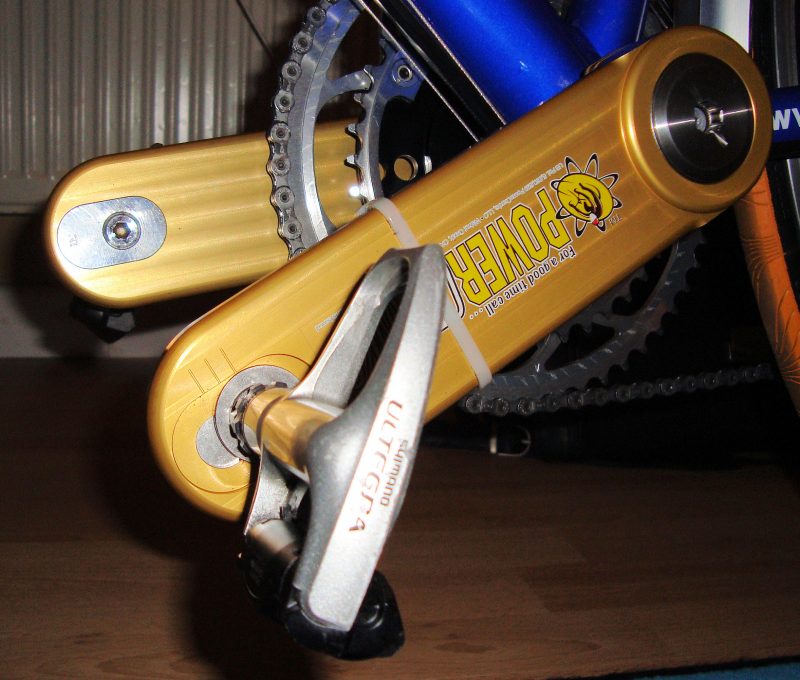
I’m sure you’re a busy guy — what do you do for a past time or hobby? Do you still practice medicine?
“I do not practice medicine anymore. After I was recalled for Desert Storm I stayed on active duty long enough to retire. Around that time I had the idea for PowerCranks and decided to not get back into the medicine rat race. The military retirement pay kept PowerCranks alive for several years.
“But, as you guessed, being retired does not mean I am not a pretty busy guy. PowerCranks is still a very tiny outfit with only two of us doing all the work. Many are surprised when they call and I answer the phone.
“My hobbies right now include riding my bike enough to keep me feeling reasonably good about my fitness level, photography, and trying to improve my Wii balance and to get and keep my Wii fitness age to less than half my real age.”
What’s your all-time favorite moment in triathlon?
“I guess it would have to be finishing ’78, even though it wasn’t a big thing at the time but it made all the other stuff that has followed possible. Without me (and a couple of others) how many here would be looking for or doing other jobs?
“Other favorite moments would have to be watching some of the courage shown during the meltdowns like Julie Moss, and the Sian Welch – Wendy Ingraham crawlathon finish, pulling all the strings I owned to get Steve Larsen into Ironman Lake Placid and then watching him smash both the bike and course record, and recognizing Courtney Ogden come down from Richter pass at IM Canada in first place from a mile away (because both feet were down) while racing on PowerCranks.
“And, seeing the joy on the face of the average first-timer when they cross the line. It is quite an accomplishment for everyone. Those who complain they are not real triathletes because their time was slow should find another sport as far as I am concerned. There are many more memories that deserve mention, those are just a few.”
VeloVeritas would like to thank Frank for his generous time. For more information, please visit PowerCranks.com.



